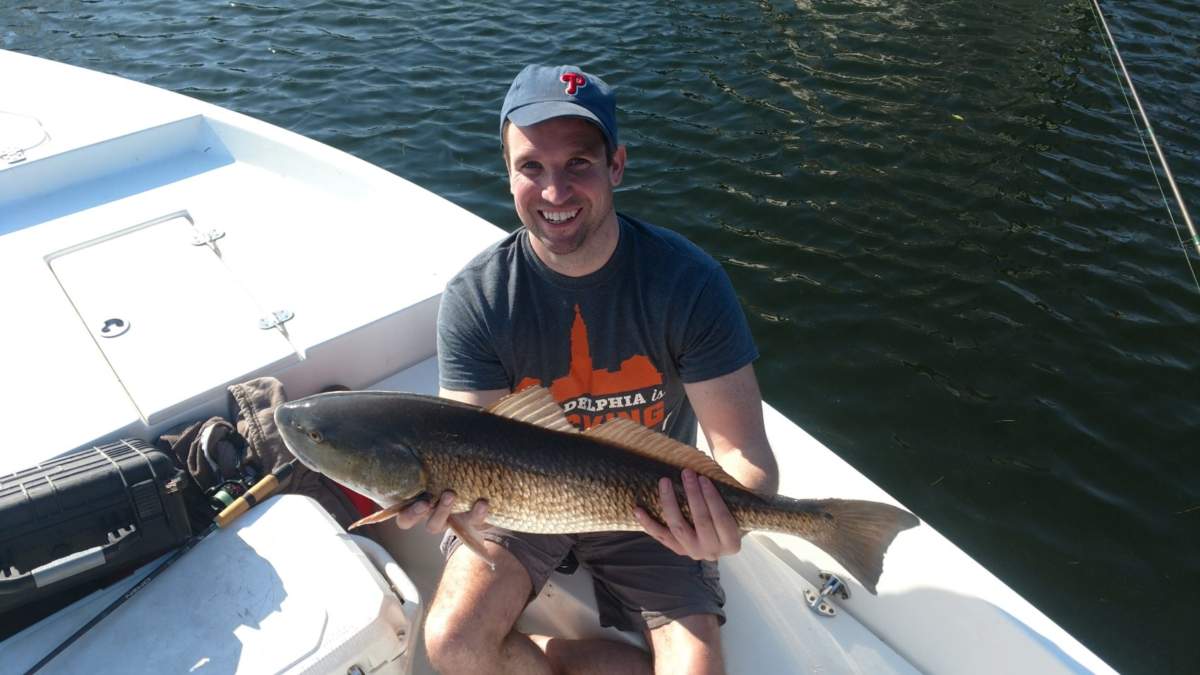Last Updated on July 17, 2017 by Staff Writer
Guest Article
Tampa Bay is home to an incredible fishery. Everything from bulldogging redfish, to line ripping snook, head shaking trout and even the high-flying silver king, Tampa Bay is a fisherman’s paradise. What’s even better is that these fish can be caught year round, yes, even small, resident tarpon cruising the back country waters along the mangrove lined shores. Although there are many different ways to target and catch these fish, there’s nothing much that compares to the fine art of sight fishing to these brutes. Of course, as with most things, this is much easier said than done, but with these few tips you can be better prepared and up your chances at a successful hookup with an unsuspecting fish; one that you stalked. Listen up, class is in session!
Before you even think about trying to spot fish in the water, you’re going to want to get yourself a good pair of polarized sunglasses. They make all the difference when looking for fish by cutting the glare from the surface of the water. It’s really quite amazing what a good pair of sunglasses will do. Using an amber or bronze colored lens seems to work the best for skinny water situations. Whatever you do, do NOT leave them at home!
Silence is golden. Noise and commotion is your biggest enemy when stalking fish out on the flats. This is when it becomes a good time to kill the motor, even a trolling motor, and silently pole your skiff through an area that looks like it may be fishy. Also be mindful of making noise on the deck of your boat. Sound resonates through water and the drop of your pole, or pliers and a hard step may scare off any fish that were in the area. Remember, the key is spotting fish before they spot you. Don’t tip them off.
When dissecting a flat looking for fish, try to keep the sun to your back. This allows for great visibility for you, and not so much for the fish. With that being said, you must be mindful of your shadow. The angle of the sun will play a big part of how large of a shadow you’ll cast. So keep that in mind.
Don’t get too close to the fish. Fish in skinny water are on high alert and spook very easily; get as close as possible to make an accurate cast. Speaking of cast, you’ll need to perfect a slow and soft cast to gently lay the bait near your intended target. Bass fishermen know what I’m talking about when it comes to laying a bait in. An overhand cast tends to plop into the water making a large splash and possibly scaring the fish. Try a sidearm or underhand cast. Practice makes perfect when it comes to this technique, so practice!
Sight fishing doesn’t always mean you’ll see the fish. Sometimes sight fishing means watching and looking for signs of fish like wakes and pushes in the water as they swim about or chase bait. Topwater hits, swirls or even tails sticking above the surface of the water are all sure signs of fishy activity. Remember, slow and steady wins the race. Be patient and you shall be rewarded.
Book a trip here with Captain Jason Dozier for some hands-on experience and instruction on sight casting Tampa Bay. It’s a way of fishing that just may change you forever.


